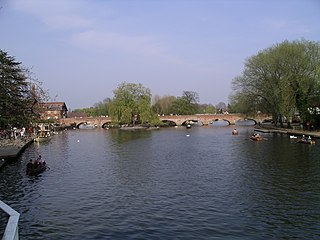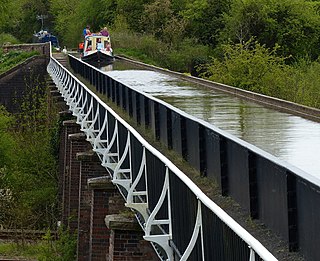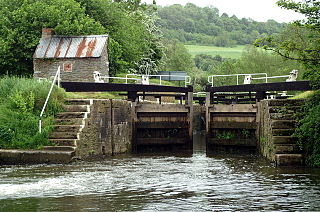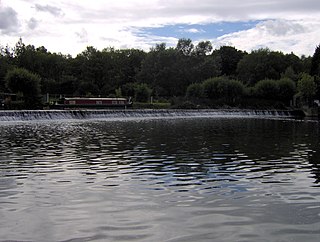
Water transport played a vital role in the UK's industrial development. The beginning of the 19th century saw a move from roads to waterways, (i.e. canals, rivers, firths, and estuaries).

Water transport played a vital role in the UK's industrial development. The beginning of the 19th century saw a move from roads to waterways, (i.e. canals, rivers, firths, and estuaries).
Major navigable rivers include the Humber, Mersey, Yorkshire Ouse, Severn, Thames and Trent. Some minor navigable rivers may be classified as canals. Others include the Warwickshire Avon, the Bristol Avon.
There are also the subterranean rivers of London, and the Jubilee River, which, although man-made, was designed to look and act like a natural river rather than a canal.

The canals of the United Kingdom are a major part of the network of inland waterways. They are used for irrigation and transport and were a key part of the Industrial Revolution. Today, they are also used for recreational boating.

Canals or artificial waterways are waterways or engineered channels built for drainage management or for conveyancing water transport vehicles. They carry free, calm surface flow under atmospheric pressure, and can be thought of as artificial rivers.

A towpath is a road or trail on the bank of a river, canal, or other inland waterway. The purpose of a towpath is to allow a land vehicle, beasts of burden, or a team of human pullers to tow a boat, often a barge. This mode of transport was common where sailing was impractical due to tunnels and bridges, unfavourable winds, or the narrowness of the channel.

British Waterways, often shortened to BW, was a statutory corporation wholly owned by the government of the United Kingdom. It served as the navigation authority for the majority of canals and a number of rivers and docks in England, Scotland and Wales.

Waterway restoration is the activity of restoring a canal or river, including special features such as warehouse buildings, locks, boat lifts, and boats.

The River Avon in central England flows generally southwestwards and is a major left-bank tributary of the River Severn, of which it is the easternmost. It is also known as the Warwickshire Avon or Shakespeare's Avon, to distinguish it from several other rivers of the same name in the United Kingdom.

The Stratford-upon-Avon Canal is a canal in the south Midlands of England. The canal, which was built between 1793 and 1816, runs for 25.5 miles (41.0 km) in total, and consists of two sections. The dividing line is at Kingswood Junction, which gives access to the Grand Union Canal. Following acquisition by a railway company in 1856, it gradually declined, the southern section being un-navigable by 1945, and the northern section little better.

The canal network of the United Kingdom played a vital role in the Industrial Revolution. The UK was the first country to develop a nationwide canal network which, at its peak, expanded to nearly 4,000 miles in length. The canals allowed raw materials to be transported to a place of manufacture, and finished goods to be transported to consumers, more quickly and cheaply than by a land based route. The canal network was extensive and included feats of civil engineering such as the Anderton Boat Lift, the Manchester Ship Canal, the Worsley Navigable Levels and the Pontcysyllte Aqueduct.

The canals of the United Kingdom are a major part of the network of inland waterways in the United Kingdom. They have a varied history, from use for irrigation and transport, through becoming the focus of the Industrial Revolution, to today's role of recreational boating. Despite a period of abandonment, today the canal system in the United Kingdom is again increasing in use, with abandoned and derelict canals being reopened, and the construction of some new routes. Canals in England and Wales are maintained by navigation authorities. The biggest navigation authorities are the Canal & River Trust and the Environment Agency, but other canals are managed by companies, local authorities or charitable trusts.

The Inland Waterways Association (IWA) is a registered charity in the United Kingdom which was formed in 1946 to campaign for the conservation, use, maintenance, restoration and sensitive development of British canals and river navigations.

Hanham Lock is a canal lock situated on the River Avon, at the village of Hanham near Bristol, England.

Keynsham Lock is a canal lock situated on the River Avon at Keynsham, England.

Swineford Lock is a canal lock situated on the River Avon, at the village of Swineford, England.

Saltford Lock is a canal lock situated on the River Avon, at the village of Saltford, between Bristol and Bath, England.

Kelston Lock is a canal lock situated on the River Avon, between the villages of Kelston and Saltford, between Bristol and Bath, England.

Weston Lock is a canal lock situated on the River Avon, on the western outskirts of Bath, England, in what now forms the Newbridge suburb of Bath.

The Waterway Recovery Group (WRG) is the national co-ordinating body for voluntary labour on the inland waterways of England and Wales. Founded in 1970 as an independent body, it became a division of the Inland Waterway Association in 2002.
A navigation authority is a company or statutory body which is concerned with the management of a navigable canal or river.